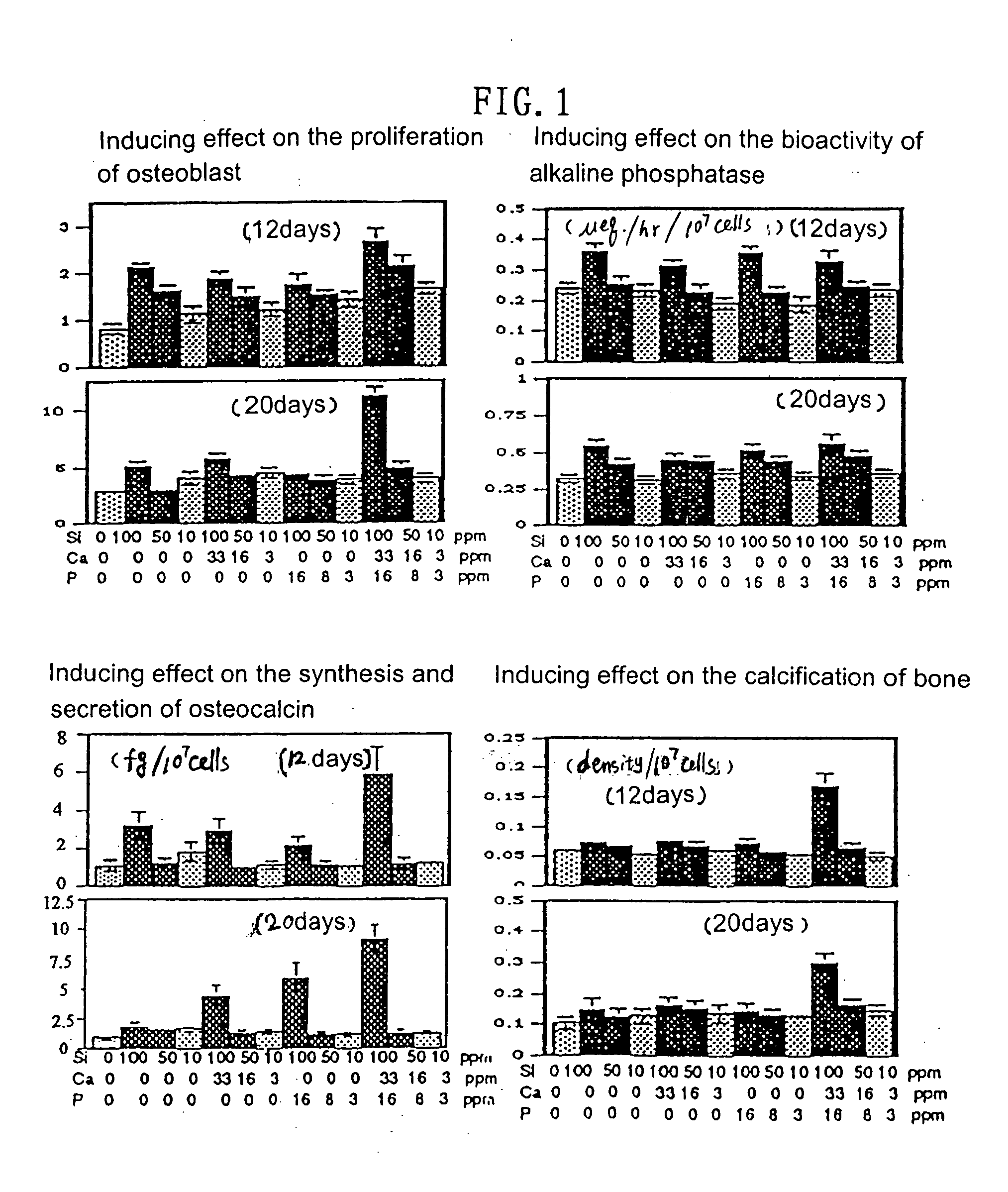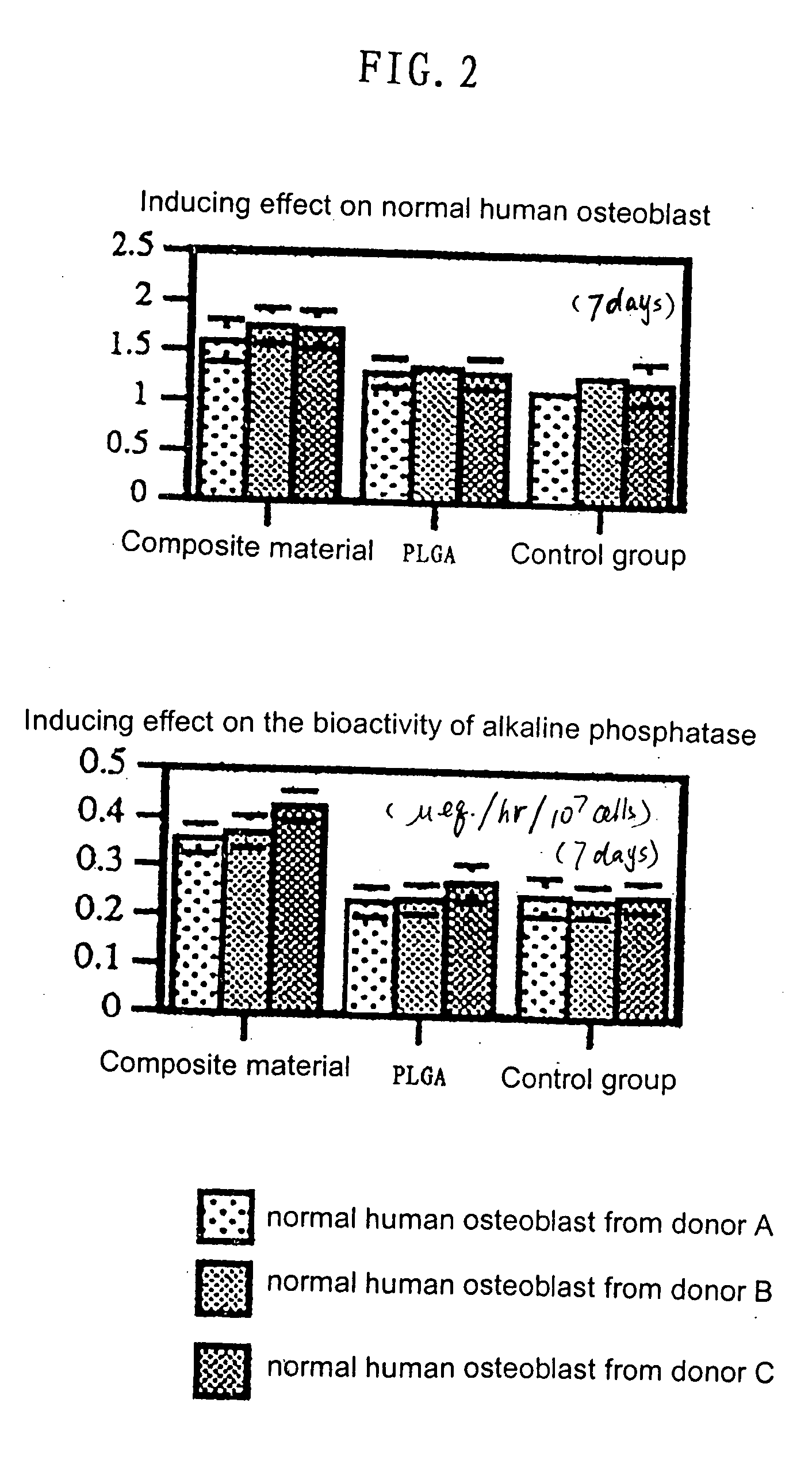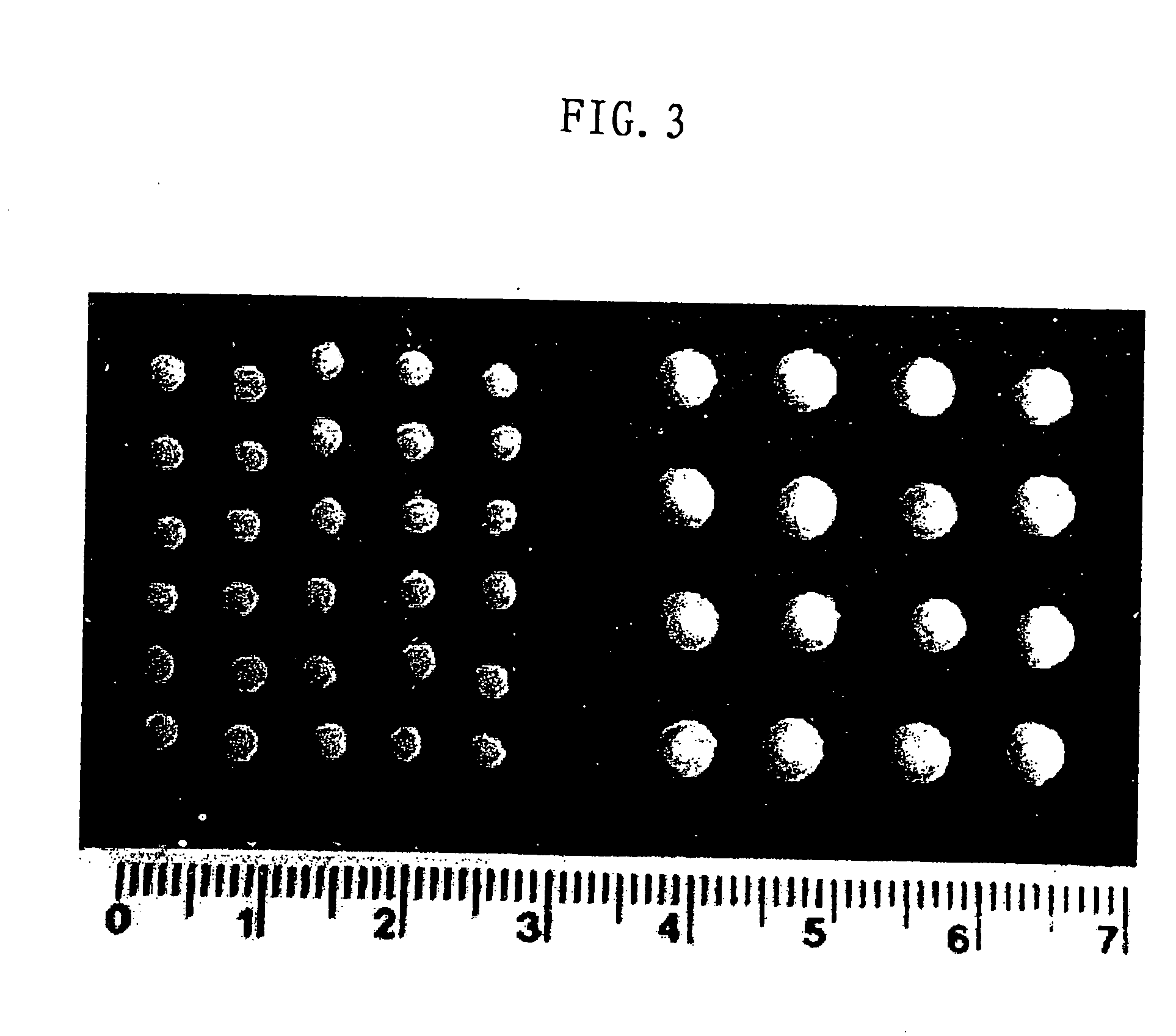Scaffold product for human bone tissue engineering, methods for its preparation and uses thereof
a technology of human bone tissue and scaffolding, which is applied in the field of scaffolding products for human bone tissue engineering, can solve the problems of poor physical properties, increased cost of natural collagen, and increased risk of infection, so as to promote the formation and calcification of new bone, promote the proliferation and differentiation of human osteoblasts, and repair the defect of bone tissue safely, economically and effectively
- Summary
- Abstract
- Description
- Claims
- Application Information
AI Technical Summary
Benefits of technology
Problems solved by technology
Method used
Image
Examples
example 1
Silicon, Calcium, Phosphorus Microparticles Biologically Induce the Proliferation of Osteoblasts, Bioactivity of Alkaline Phosphatase, Synthesis and Secretion of Osteocalcin, and Bone Calcification in Normal Human Body Significantly
[0031] The human osteoblast cells used in the test are obtained from healthy donors aged from 20 to 25 years old. Each of the groups of cells is obtained from 0.2 cm.sup.3 superficial skeletal fragments of one donor. There are totally 5 groups of cells used in the test. The mean values and standard deviations of the test data for 5 groups are shown in FIG. 1. It can be seen that a 0.2 cm.sup.3 superficial skeletal fragment of donors can proliferate to produce 6-10 millions of autologous osteoblast cells having osteogenesis activity in laboratory. The cell culture media used in the test are pre-added with the silicon, calcium, phosphorus particles having a diameter of less than 10 microns at specific concentrations or proportions as shown below in the tabl...
example 2
The Composite Material Comprising Silicon, Calcium, Phosphorus Microparticles and Organic Polymer (PLGA), is Advantageous Over the Single PLGA Material in Inducing the Proliferation of Normal Human Osteoblasts and the Bioactivity of Alkaline Phosphatase
[0032] This biological assay illustrates the inducing effect of one group of nanometer composite materials of the present invention in cell culture in vitro, and makes a comparison to the single organic polymer PLGA and conventional polystyrene cell culture dishes. The atomical contents of inorganic elements in the element combination of the composite material are 67% silicon, 22% calcium, and 11% phosphorus, and the volume ratio of the inorganic element combination to PLGA is 50:50. This composite material and the single organic polymer PLGA are separately processed to form disks with a diameter of 2 cm and a thickness of 1.5 mm by the hot-cast method with a mould at 200.degree. C. for 8 hours (see also example 4 for the detailed ste...
example 3
The Diffusion and Distribution of Silicon Ions After Silicon Nanometer Material is Implanted into an Animal Model, and the Ion Distribution for Inducing the Regeneration of New Bone Tissue
[0033] Adult white rabbits are used as animal model in the present biological test. A bone cavity with a diameter of 0.5 cm is made at fibula of the animal model by a bradawl, then the silicon / calcium / phospho-rus composite material particles (atomical ratio of Si:Ca:P=67:22:11) having a diameter of 50-80 nm are filled into said cavity, finally the wounded area is sutured. The test animals are fed for 2 or 8 weeks, and then the portion filled with the composite material and surrounding tissues are removed by a second surgery, which are fixed with 10% formaldehyde, embedded with resin, sectioned as 1 mm slices along the longitudinal section, and finally the ion concentration distributions at two sides of the interface between the region filled with the composite material and the surrounding animal ti...
PUM
| Property | Measurement | Unit |
|---|---|---|
| diameter | aaaaa | aaaaa |
| diameter | aaaaa | aaaaa |
| diameter | aaaaa | aaaaa |
Abstract
Description
Claims
Application Information
 Login to View More
Login to View More - R&D
- Intellectual Property
- Life Sciences
- Materials
- Tech Scout
- Unparalleled Data Quality
- Higher Quality Content
- 60% Fewer Hallucinations
Browse by: Latest US Patents, China's latest patents, Technical Efficacy Thesaurus, Application Domain, Technology Topic, Popular Technical Reports.
© 2025 PatSnap. All rights reserved.Legal|Privacy policy|Modern Slavery Act Transparency Statement|Sitemap|About US| Contact US: help@patsnap.com



